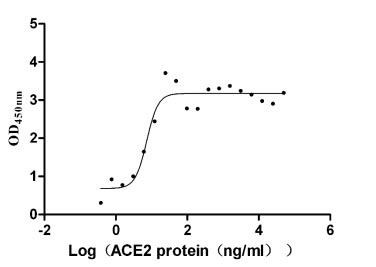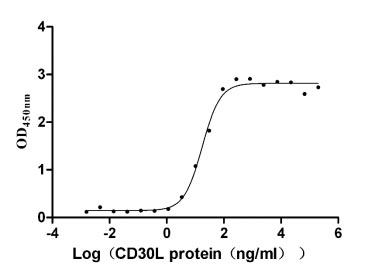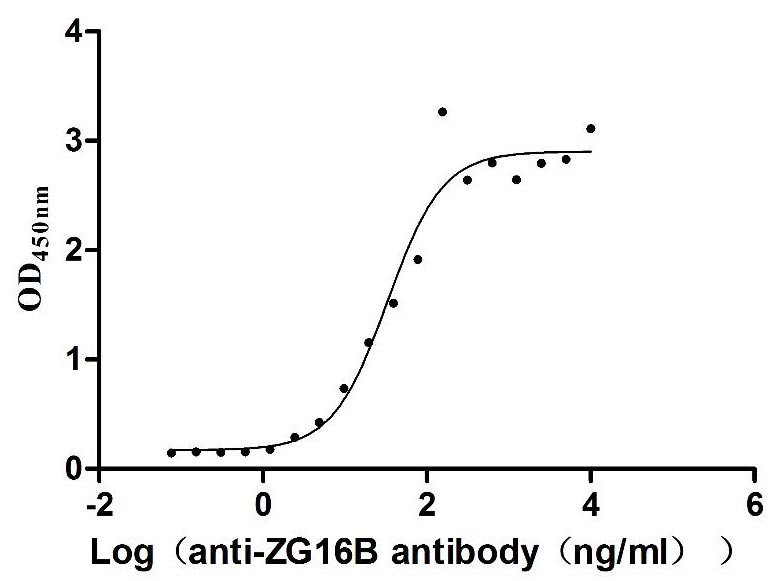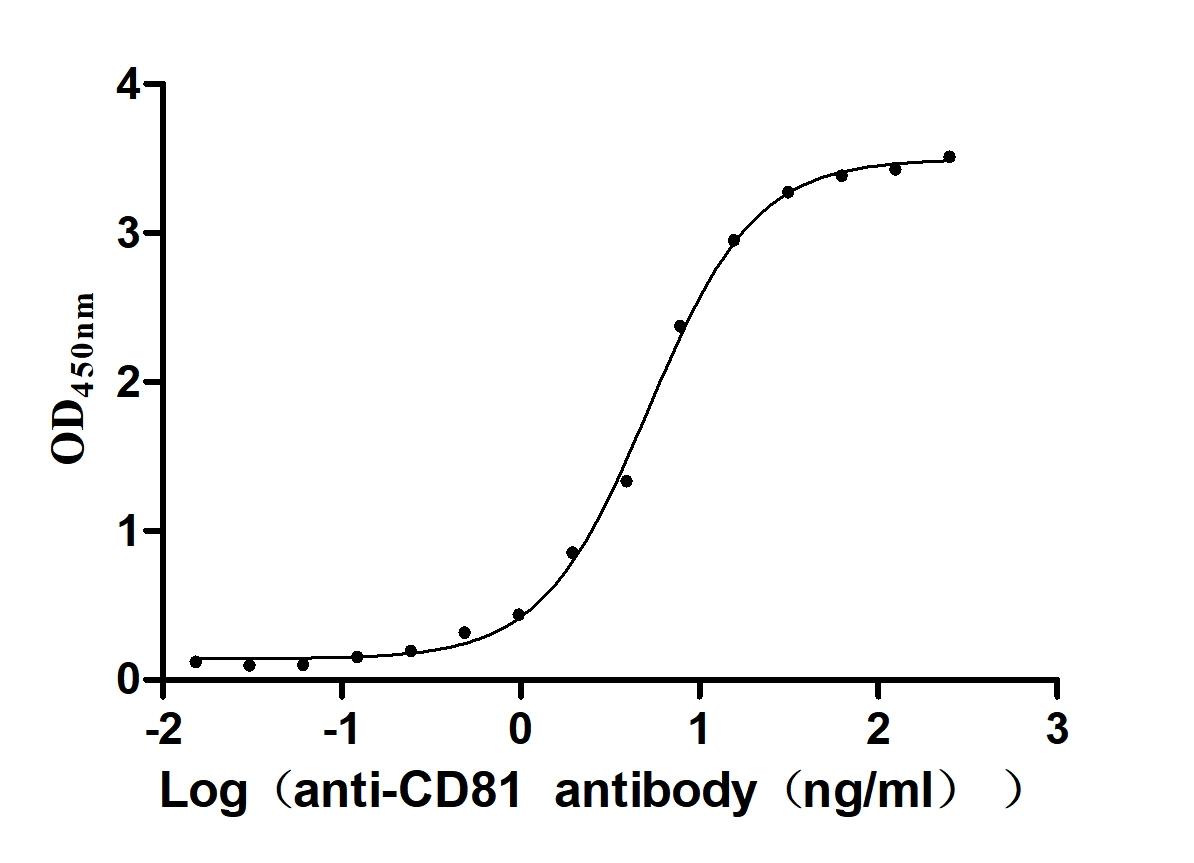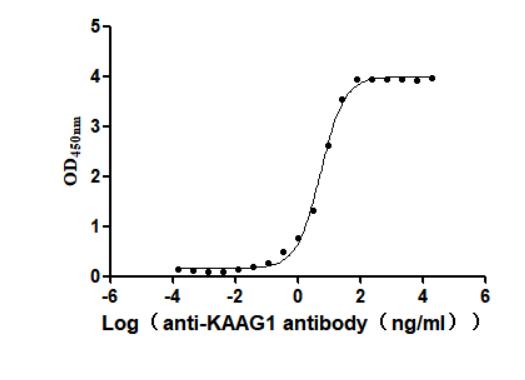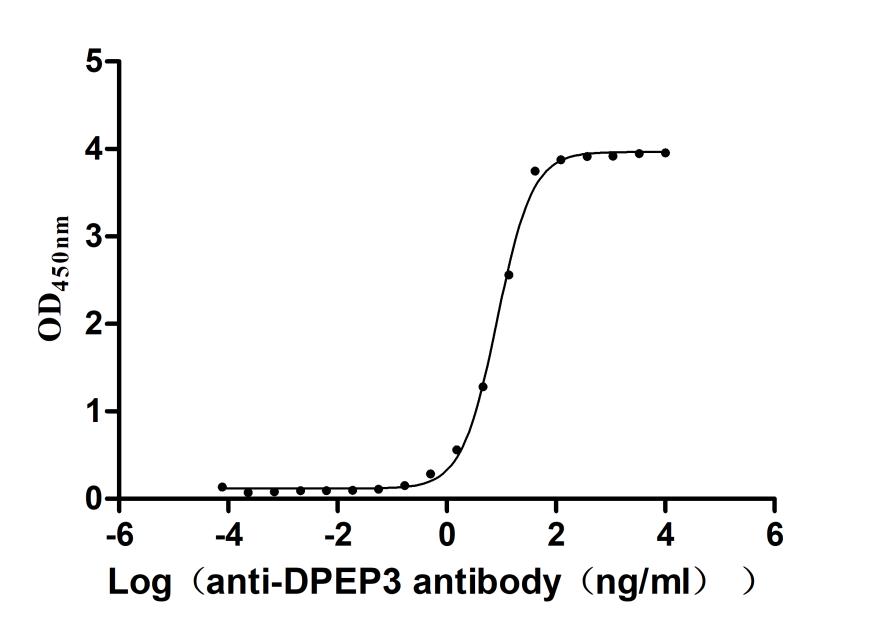Recombinant Human Sterol regulatory element-binding protein cleavage-activating protein (SCAP), partial
-
中文名稱:人SCAP重組蛋白
-
貨號:CSB-YP622510HU
-
規(guī)格:
-
來源:Yeast
-
其他:
-
中文名稱:人SCAP重組蛋白
-
貨號:CSB-EP622510HU
-
規(guī)格:
-
來源:E.coli
-
其他:
-
中文名稱:人SCAP重組蛋白
-
貨號:CSB-EP622510HU-B
-
規(guī)格:
-
來源:E.coli
-
共軛:Avi-tag Biotinylated
E. coli biotin ligase (BirA) is highly specific in covalently attaching biotin to the 15 amino acid AviTag peptide. This recombinant protein was biotinylated in vivo by AviTag-BirA technology, which method is BriA catalyzes amide linkage between the biotin and the specific lysine of the AviTag.
-
其他:
-
中文名稱:人SCAP重組蛋白
-
貨號:CSB-BP622510HU
-
規(guī)格:
-
來源:Baculovirus
-
其他:
-
中文名稱:人SCAP重組蛋白
-
貨號:CSB-MP622510HU
-
規(guī)格:
-
來源:Mammalian cell
-
其他:
產(chǎn)品詳情
-
純度:>85% (SDS-PAGE)
-
基因名:
-
Uniprot No.:
-
別名:KIAA0199; SCAP; SCAP_HUMAN; SREBF chaperone; SREBF chaperone protein; SREBP cleavage activating protein; SREBP cleavage-activating protein; Sterol regulatory element binding protein cleavage-activating protein; Sterol regulatory element-binding protein cleavage-activating protein
-
種屬:Homo sapiens (Human)
-
蛋白長度:Partial
-
蛋白標(biāo)簽:Tag?type?will?be?determined?during?the?manufacturing?process.
The tag type will be determined during production process. If you have specified tag type, please tell us and we will develop the specified tag preferentially. -
產(chǎn)品提供形式:Lyophilized powder
Note: We will preferentially ship the format that we have in stock, however, if you have any special requirement for the format, please remark your requirement when placing the order, we will prepare according to your demand. -
復(fù)溶:We recommend that this vial be briefly centrifuged prior to opening to bring the contents to the bottom. Please reconstitute protein in deionized sterile water to a concentration of 0.1-1.0 mg/mL.We recommend to add 5-50% of glycerol (final concentration) and aliquot for long-term storage at -20℃/-80℃. Our default final concentration of glycerol is 50%. Customers could use it as reference.
-
儲存條件:Store at -20°C/-80°C upon receipt, aliquoting is necessary for mutiple use. Avoid repeated freeze-thaw cycles.
-
保質(zhì)期:The shelf life is related to many factors, storage state, buffer ingredients, storage temperature and the stability of the protein itself.
Generally, the shelf life of liquid form is 6 months at -20°C/-80°C. The shelf life of lyophilized form is 12 months at -20°C/-80°C. -
貨期:Delivery time may differ from different purchasing way or location, please kindly consult your local distributors for specific delivery time.Note: All of our proteins are default shipped with normal blue ice packs, if you request to ship with dry ice, please communicate with us in advance and extra fees will be charged.
-
注意事項(xiàng):Repeated freezing and thawing is not recommended. Store working aliquots at 4°C for up to one week.
-
Datasheet :Please contact us to get it.
相關(guān)產(chǎn)品
靶點(diǎn)詳情
-
功能:Escort protein required for cholesterol as well as lipid homeostasis. Regulates export of the SCAP-SREBP complex from the endoplasmic reticulum to the Golgi upon low cholesterol, thereby regulating the processing of sterol regulatory element-binding proteins (SREBPs) SREBF1/SREBP1 and SREBF2/SREBP2. At high sterol concentrations, formation of a ternary complex with INSIG (INSIG1 or INSIG2) leads to mask the ER export signal in SCAP, promoting retention of the complex in the endoplasmic reticulum. Low sterol concentrations trigger release of INSIG, a conformational change in the SSD domain of SCAP, unmasking of the ER export signal, promoting recruitment into COPII-coated vesicles and transport of the SCAP-SREBP to the Golgi: in the Golgi, SREBPs are then processed, releasing the transcription factor fragment of SREBPs from the membrane, its import into the nucleus and up-regulation of LDLR, INSIG1 and the mevalonate pathway. Binds cholesterol via its SSD domain.
-
基因功能參考文獻(xiàn):
- Polymorphism in SCAP gene is associated with high blood pressure. PMID: 28542467
- These insights suggest a new structural model for cholesterol-mediated regulation of Scap activity. PMID: 28377508
- The genetic polymorphisms of SREBF1 could play a role in the mechanism for interindividual variation of atypical antipsychotics-induced metabolic syndrome (MetS). SCAP polymorphisms with drug-induced MetS were negative in this study. PMID: 26982812
- this study uncovered a novel function of SCAP of counteracting the inhibitory action of Dengue Virus NS2B3 protease on STING signaling, suggesting that modulation of SCAP levels may have therapeutic implications. PMID: 28228593
- Data indicate that glucose-mediated glycosylation promotes SREBP cleavage-activating protein (SCAP) trafficking to the Golgi Leading to sterol regulatory element binding protein 1 (SREBP-1) activation. PMID: 26555173
- identified interaction of three genes in INSIG-SCAP-SREBP pathway on risk of obesity, revealing that these genes affect obesity more likely through a complex interaction pattern than single gene effect. PMID: 25028659
- Enhanced SCAP glycosylation by inflammation induces macrophage foam cell formation. PMID: 24146768
- SCAP gene polymorphisms decrease the risk of nonalcoholic fatty liver disease in females with metabolic syndrome. PMID: 24371177
- SREBP cleavage regulates Golgi-to-endoplasmic reticulum recycling of SREBP cleavage-activating protein (SCAP) PMID: 24478315
- A point mutation in Scap Loop 7 prevents interaction with Loop 1 and abolishes endoplasmic reticulum exit. PMID: 23564452
- the SCAP/SREBP signaling axis has a role in protecting cancer cells from lipotoxicity PMID: 23440422
- Data indicate that SREBP-2 and Scap are regulated by factors driving prostate growth, and suggest exploring this observation further could shed light on prostate carcinogenesis. PMID: 23454642
- could not identify any association between SREBF-2 1784G > C or SCAP 2386A > G SNPs and premature coronary artery disease or extent of coronary lesions in a Chinese population. PMID: 20111910
- TNF alpha upregulates the expression of SCAP and promotes the synthesis of triglyceride in cultured steatotic hepatocytes. PMID: 17963605
- Required for sterol-regulated transport of SREBPs from ER to Golgi. PMID: 12842885
- A possible gene-gene interaction between the genes encoding SREBP-2 and SCAP that modulate plasma lipids in a strictly gender-specific fashion. PMID: 16466730
- SCAP polymorphism appeared to modify the associations of SREBF-2 genotype with myocardial infarction risk among men. PMID: 17383658
顯示更多
收起更多
-
亞細(xì)胞定位:Endoplasmic reticulum membrane; Multi-pass membrane protein. Golgi apparatus membrane; Multi-pass membrane protein. Cytoplasmic vesicle, COPII-coated vesicle membrane; Multi-pass membrane protein.
-
蛋白家族:WD repeat SCAP family
-
數(shù)據(jù)庫鏈接:
Most popular with customers
-
Recombinant Human Mesothelin (MSLN), partial (Active)
Express system: Mammalian cell
Species: Homo sapiens (Human)
-
Recombinant Macaca fascicularis Angiotensin-converting enzyme (ACE2), partial (Active)
Express system: Mammalian cell
Species: Macaca fascicularis (Crab-eating macaque) (Cynomolgus monkey)
-
Recombinant Human Tumor necrosis factor receptor superfamily member 8 (TNFRSF8), partial (Active)
Express system: Mammalian cell
Species: Homo sapiens (Human)
-
Recombinant Human IGF-like family receptor 1 (IGFLR1), partial (Active)
Express system: Mammalian cell
Species: Homo sapiens (Human)
-
Recombinant Human Pancreatic adenocarcinoma up-regulated factor (ZG16B) (Active)
Express system: Mammalian cell
Species: Homo sapiens (Human)
-
Recombinant Human CD81 antigen (CD81), partial (Active)
Express system: Mammalian cell
Species: Homo sapiens (Human)
-
Recombinant Human Kidney-associated antigen 1(KAAG1) (Active)
Express system: Baculovirus
Species: Homo sapiens (Human)
-
Recombinant Macaca fascicularis Dipeptidase 3(DPEP3) (Active)
Express system: Mammalian cell
Species: Macaca fascicularis (Crab-eating macaque) (Cynomolgus monkey)



